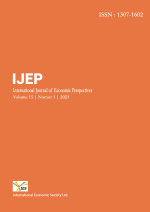Literal Perspective 0f Rass Leela As An Indian Classical Dance
Abstract
Manipuri dance underwent several changes during the 20th century A.D. The British officers did very early know that tiny state called Manipur was having a magnificent object of traditional art called “Jagoi Rasa”. It is also quite certain that no Indian political leaders of new India would ignore the opinion of Rabindranath when they thought of reconstructing the Indian dance and music tradition by determining four Indian classical dances. Viswa Kavi Rabindranath Thakur and some other important Indians leaders endeavoured to have a healthy existence of Indian classical dances including our Manipuri dance also. It was the British officers only who really nurtured and nourished Indian culture. They really knew the value of culture and its usefulness to human society. As a result of a determined long struggle to free India from British colonial rule and to create a country called Bharatvarsha by uniting many princely states under the able leadership of Mahatma Gandhi together with Pandit Jawaharlal Nehru and Sardar Patel etc. India won freedom and an independent India was born. With this, India desired to reconstruct its old tradition including its own music and dance. Thus, in the development of the existence of age long tradition of its classical dances can be achieved and as a matter of fact that the present form of Manipuri Raas could also be placed in the priority of Indian classical dance.
References
Singh, Lairenmayum Ibungohal & Singh, Ningthoukhongjam Khelchandra. Chetharol Kumbaba, Manipuri Sahitya Parisad, 2005, Imphal.
Ebotombi, Sanakhya. Manipur da Theatre amasung Drama, H. Momon Singh, 1987.
Gojendra, Lamabam, Pre 2nd World War female actors and their role, Panthoibi Natya Mandir, 2009, Imphal.
Banerji, Projesh. Uday Shankar and his Art, B. R. Publishing Corporation, First Published, 1982.
Binodini.Churachand Maharaj gi Emung, 1st printing, Nov 2008.
The New Encyclopaedia Britannica in 30 volume, Macropaedia volume 5.
Singh, Lairenmayum Ibungohal. Introduction to Manipur, Shri S. Ibochouba Singh, 3rd Edition, 1987.
58th Foundation Day (1954-2012), Jawaharlal Nehru Manipur Dance Academy, Imphal, 1st April 2012.
Devi, K. Shantibala. Rabindranath Amasung Manipuri Jagoi, Sovenier, Golden Jublee Celebration,(1963-2013), Khurai Kala Bidya Bhavan, 2013.
Singh, Sinam Hirendra.Rabindra. Rabindra Sanidhya Nobokumar O Manipuri Sanskriti, Makhalee, Bishesh Rabindra Sankhya Akhanaba Rabindra masing, 2010.
Published
How to Cite
Issue
Section
Allows users to: distribute and copy the article; create extracts, abstracts, and other revised versions, adaptations or derivative works of or from an article (such as a translation); include in a collective work (such as an anthology); and text or data mine the article. These uses are permitted even for commercial purposes, provided the user: gives appropriate credit to the author(s) (with a link to the formal publication through the relevant URL ID); includes a link to the license; indicates if changes were made; and does not represent the author(s) as endorsing the adaptation of the article or modify the article in such a way as to damage the authors' honor or reputation. CC BY







